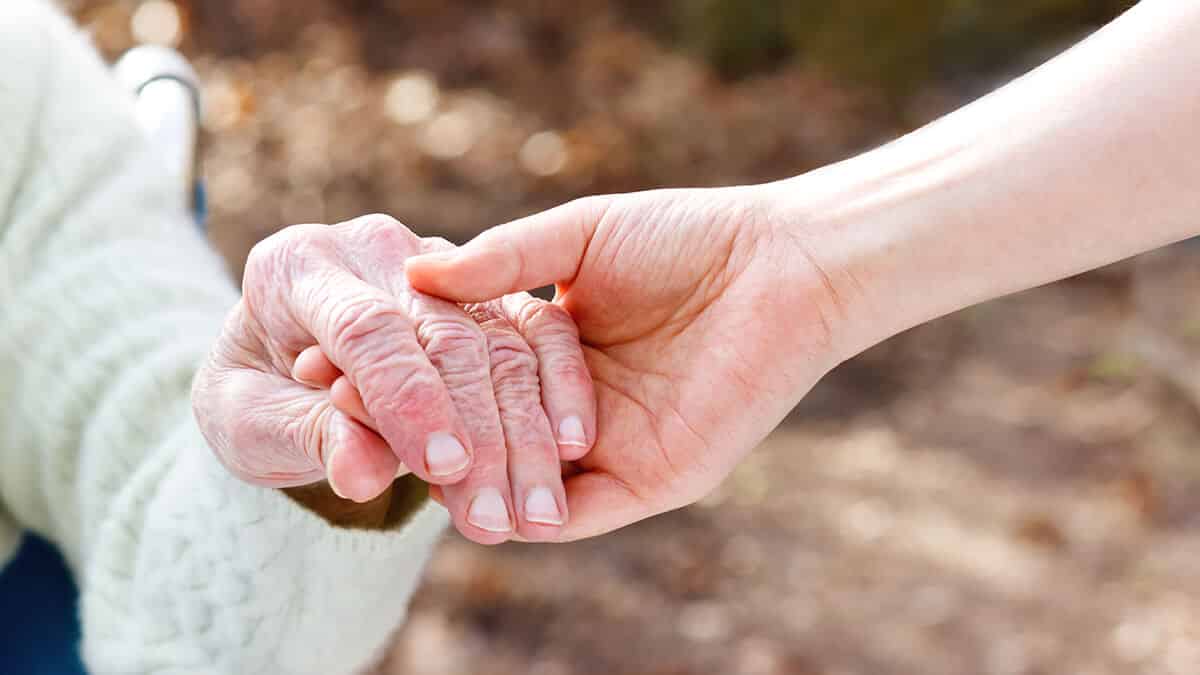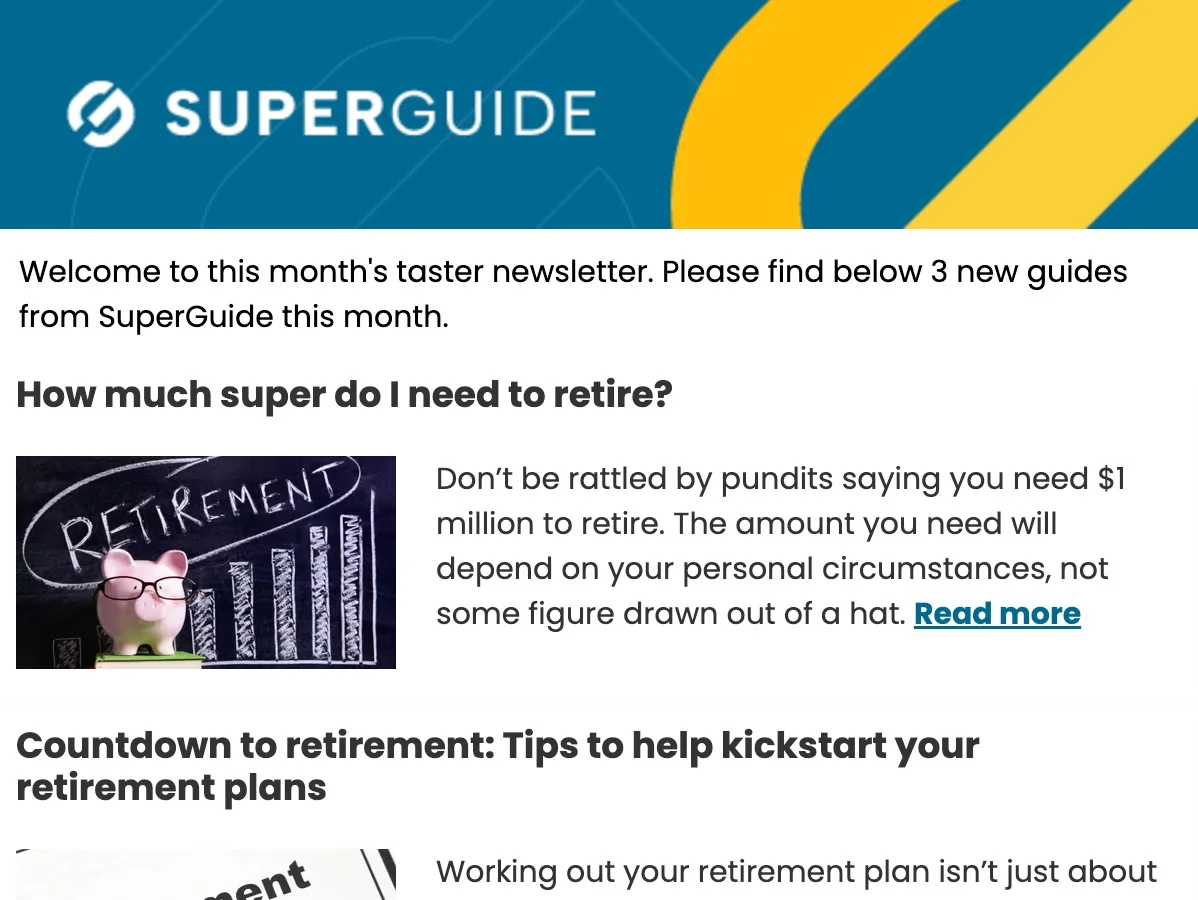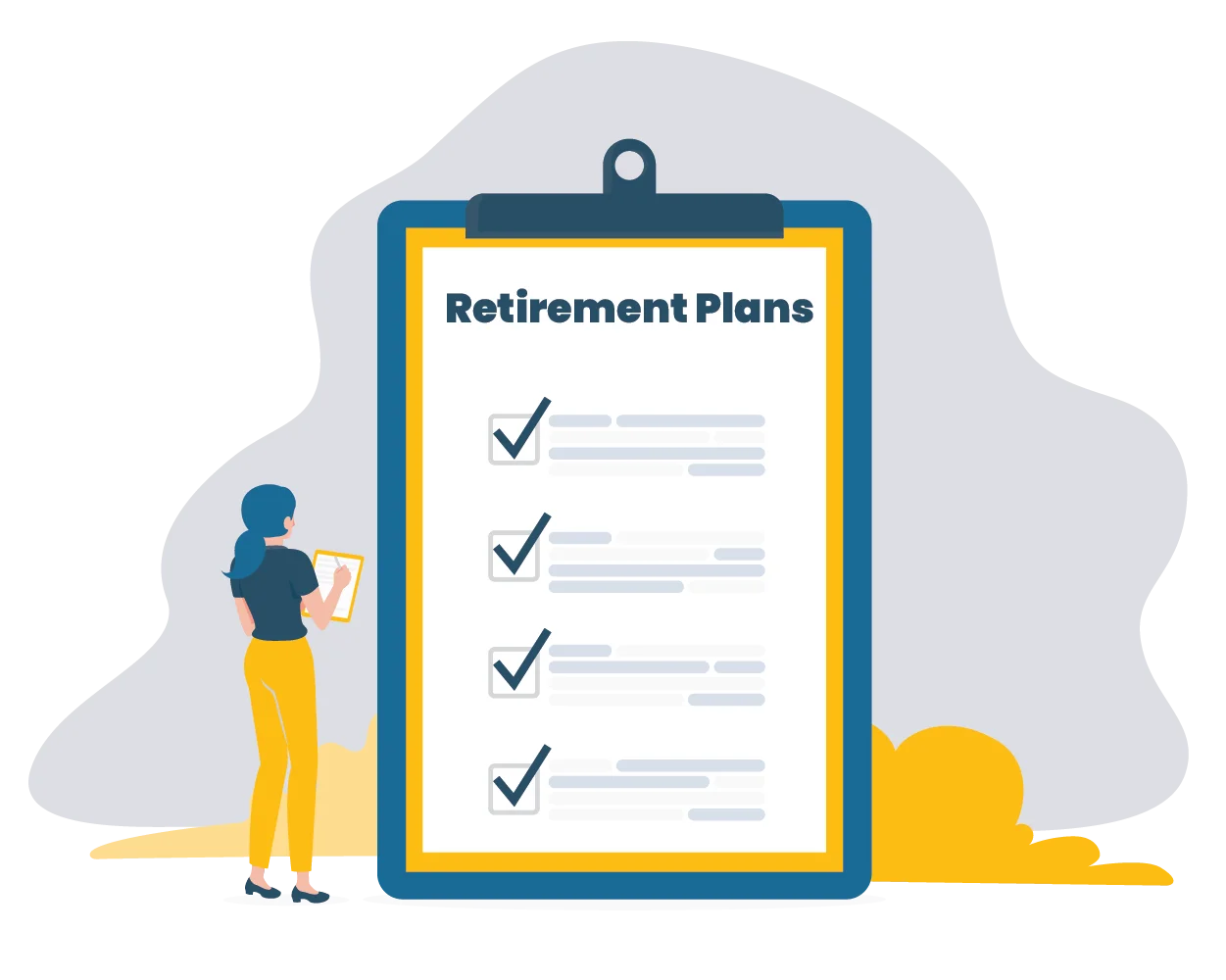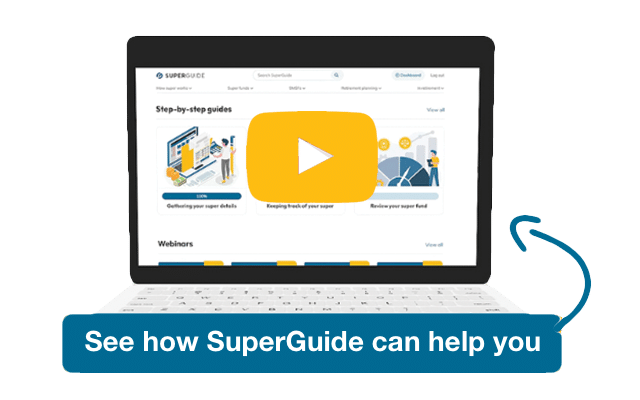

When you support and care for someone with a medical condition, disability, or who is frail and elderly, it’s a tough role in many different ways.
Not only is it physically and emotionally draining, but your bank balance can also be impacted as you are often unable to earn an income.
Currently more than 2.65 million Australians are providing care to someone for at least part of each week.
If you’re one of them, you may be eligible for some financial assistance from the Australian Government.
For retirees, these payments can be a valuable source of financial help if you’re providing care for your partner or other eligible person.

Our easy-to-follow guide walks you through the fundamentals, giving you the confidence to start your own retirement plans.
Need to know
There are two types of income payment available to carers from the Australian Government – the Carer Payment and the Carer Allowance.
The Carer Allowance is a fortnightly supplement to your normal income, while the Carer Payment is a replacement source of income.
If you are receiving the Age Pension, you may have to choose between receiving the Carer Payment and the Age Pension. This article does not cover the details of the Carer Payment.
Learn more about the Carer Payment.
The Carer Allowance is a fortnightly income supplement for people who provide additional daily care and attention for an adult or child with a disability or medical condition, or an adult who is frail and elderly. This article only deals with the rules for the Carer Allowance where you are caring for a person aged 16 or over.
You may qualify for the Carer Allowance if the person you are caring for needs ongoing daily care for at least 12 months or has a terminal medical condition.
As usual with government benefits, there are strict rules about who is eligible to receive a Carer Allowance. If you are caring for someone aged 16 or over, you must be:
To be considered an Australian resident, you must be an Australian citizen, a permanent visa holder, or a protected Special Category visa holder.
In addition, the person you are caring for must be an Australian resident and must:
As part of a claim for the Carer Allowance, you will be asked how you care for the person and their treating doctor will need to complete a medical form.

Services Australia considers you are living in Australia if this is your usual place of residence and where you make your home. For most newly arrived residents, there is usually a 52-week waiting period to receive the Carer Allowance, but the waiting period does not apply to the person for whom you are providing care. There is more information about waiting periods and exemptions on the Services Australia website.
The payment rates for the Carer Allowance are reviewed on 1 January each year.
Throughout 2023, the Carer Allowance is $144.80 each fortnight if you are providing care to someone aged 16 or older.
The Carer Allowance is paid in addition to any wages or another income support payments you receive. If you qualify to receive the allowance, your annual income has no impact on how much Carer Allowance you receive each fortnight and the payment will not be added to your taxable income.
There is no assets test for the Carer Allowance, but there is an income test. To be eligible, you and your partner’s combined adjusted taxable income (see section below) must be under $250,000 a year.
When you are assessed by Centrelink for the allowance, both members of a couple must provide their adjusted taxable income details for the same financial year. The adjusted taxable income details you provide must be verified by the ATO.

Our free step-by-step guide shows you what you need to consider so you can plan your best retirement.
A current year estimate of your adjusted taxable income will only be accepted if you have had a change in your circumstances that is acceptable to Centrelink (such as retirement or ongoing reduced working hours).
Need to know
For the Carer Allowance, your adjusted taxable income is the sum of:
For more details, see the Services Australia website here.
Once you start receiving a payment, you are required to inform Services Australia of any changes that could increase, reduce or stop your carer payments. You must notify Services Australia within 14 days if you:
You also need to tell Services Australia if either:
You must also provide information if the person receiving care:
If you fail to inform Services Australia, you will have to pay back any overpayment. If this was deliberate, you may be charged with fraud.
The rules permit you to continue receiving the Carer Allowance if someone else provides care while you have a break, or if the person you care for goes into hospital. You are, however, required to inform Services Australia.
You are permitted to have 63 days of respite each calendar year (1 January – 31 December) without your payments being stopped. These days can be for a holiday, simply a break from caring, or if you are not providing care while the person is in hospital.
During your break, the person receiving care can be in informal respite care at home or elsewhere, or be informally cared for by a friend, neighbour or family member.
If the person you care for is in hospital, you will still be paid if all of the following apply:
You will continue receiving the Carer Allowance if you leave Australia for a short time, but you must meet the payment rules at all times. If you leave Australia temporarily, you may be paid the Carer Allowance for up to six weeks, depending on whether or not the person receiving care is accompanying you on the trip.
To claim a Carer Allowance, you need to ensure you are eligible. You can then apply online at the Services Australia website here.
To apply online you must have a myGov account linked to Centrelink.
Learn more about using myGov.
You will also need to prove your identity and provide any necessary supporting documents (such as details of your financial assets, annual statement for your SMSF, and medical reports and certificates for the person receiving care).
Good to know: In some situations a Carer Allowance can be shared between two people who provide care for the same person (such as siblings sharing the care of an elderly parent).
Chris and Susie had been married for 50 years and were enjoying their retirement when Chris was diagnosed with dementia. Over the next few years, Chris’ physical and mental health were increasingly impacted by his dementia and Susie became his full-time carer.
As Chris’ health declined, he was placed on a waiting list for residential aged care, but additional in-home care services became necessary as he waited for a place to become available. Susie increasingly found these additional in-home care services difficult to pay for from their retirement savings.
Susie applied to Centrelink for a Carers Allowance for the care she was providing to Chris in their home.
Centrelink assessment of Chris and Susie for the Carer Allowance
Chris (age 78) and Susie (age 74) are both Australian residents. When Susie applied for the Carer Allowance:
The following outlines the Centrelink assessment of their financial assets for the Carer Allowance:
Chris and Susie’s financial assets and income
| Financial assets | Annual income from the asset |
|---|---|
| $550,000 – jointly owned home | Nil |
| $6,500 – bank transaction account earning 0% per year | Nil |
| $85,000 – term deposit earning 4% per year | $3,400 |
| $1,653.40* per fortnight maximum Age Pension combined couples rate (with supplements) | $42,988 |
| $15,000 – jointly owned car | Nil |
| $5,000 – home contents | Nil |
*Maximum couple combined rate includes the maximum basic rate, pension supplement and energy supplement applying at 20 September 2023.
There is no assets test in place for the Carer Allowance, so Chris and Susie’s home, car and home contents were excluded from their assessment by Centrelink.
Chris and Susie’s annual income of $46,388 is under the annual threshold of $250,000 for a combined adjusted taxable income.
This means Susie is eligible to receive a regular fortnightly payment of $144.80 in Carer Allowance for her role as the carer for Chris.
Super tip
For more information about the various types of federal government support available to carers, check out the Carer Gateway website or phone 1800 422 737.
The Carer Gateway offers carers help and advice, support and information on respite and financial help, and is a way to connect with other carers.
Most state and territory governments also provide carers with help and support, so check out the government website for your state or territory to find out what’s on offer.

Already a member? Log in